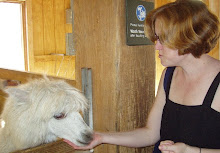 Frankly, enough has been said about the political implications of this cover in the last 24 hours to last the rest of the campaign. I'm not interested in the political fallout here. (Well, I am- just not within the context of this blog.) However, this does give me the opportunity to talk about the joys and the dangers of satire.
Frankly, enough has been said about the political implications of this cover in the last 24 hours to last the rest of the campaign. I'm not interested in the political fallout here. (Well, I am- just not within the context of this blog.) However, this does give me the opportunity to talk about the joys and the dangers of satire. It is not clear who or what this cartoon is attempting to skewer. Apparently, the artist was trying to communicate the ridiculousness of the rumors surrounding the Obamas. The editor has defended the cover saying that it was so over-the-top that no one could possibly see it as anything other than humor. Unfortunately, since people really DO believe these things about the Obamas the cover would not seem that far-fetched to 12% of the population- according to a poll conducted by The Pew Research Center. If this were not the case, The New Yorker would have no reason to even run the cartoon on the last page. Funnier still is that those are the people least likely to read The New Yorker so they could learn more about the cover story. But they will see the cover at the news stand.
Where the New Yorker went wrong, in my humble opinion, is not in the subject matter but in the designation of the subject. Since the artwork does not depict the type of person who believes such untruths the message is that the New Yorker and its readers endorse these beliefs- thereby legitimizing those rumors as fact. An easy way to solve the problem is to use the cliche thought bubble- attributing the beliefs to someone other than The New Yorker itself. Of course, the problem with that is how do you portray such a population without coming off as elitist and judgmental? How would that message be received if the cover had portrayed a slack jawed yokel (clinging to his gun and Bible, perhaps?) watching FOX News and imagining the Obamas as such? Then the focus would not be on the rumors about the Obamas (although they would be reinforced just by having that image out there) but on the unflattering image of rural America and the prejudice of elitist, urban liberals who work at the New Yorker.
Perhaps we SHOULD focus for a moment on the prejudices of elitist, urban liberals. You see, no matter what cartoon was chosen to be on the cover to convey that particular cultural disconnect the joke is, at its heart, an elitist one. It is a private and angry chuckle for the intellectuals who read the New Yorker which allows them to feel superior over the ignorant masses. Perhaps a more effective cartoon would be to have three thought bubbles. The first depicting a latte liberal imagining the slack jawed yokel imagining the Obamas. The best satire sheds light on whole and uncomfortable truths- not just selective ones. We all shoulder some responsibility for the divide in this country- even the "enlightened" and self-satisfied urban liberal. Over simplifying the fears of 12% of the population does nothing to dispel them. In fact- it adds to the further entrenchment of the belief.
That is the sin of The New Yorker. It does not step back far enough to see what this anxiety is truly about and therefor cannot possibly make a sharp or witty observation about it. It simply strokes itself for being smart enough to "get it". Unfortunately, it seems that only The New Yorker staff got the joke. The rest of us can only stand back and stammer at its stupidity.
Anyway, the biggest truth of all is that New Yorker cartoons have never really been that funny- but that was already addressed on an episode of Seinfeld.



No comments:
Post a Comment